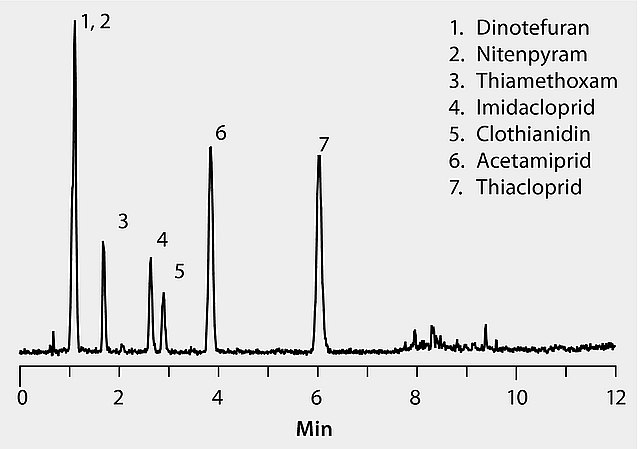Neonicotinoids
General Information
Neonicotinoids are a family of active substances which include imidacloprid, acetamiprid, thiacloprid, dinotefuran, nitenpyram, thiamethoxam and clothianidin. They are used in plant protection to control harmful insects and also in veterinary medicine. The name literally means “new nicotine-like insecticide” due to the chemical similarity to nicotine. Sometimes the name neonicotinoids is shortened to “neonics” or “NNIs”. The neonicotinoid class accounts for about 20% of the current global insecticide market.
Mechanism of Toxicity
Neonicotinoids act on postsynaptic nicotinic acetylcholine receptors (nAChRs). In insects, these receptors are located entirely in the central nerve system (CNS). In mammals, nAChRs are located in the brain, autonomic ganglia, skeletal muscle, and spinal cord. Neonicotinoids have a much lower activity in vertebrates as compared to insects due to the different binding properties of the various receptor subtypes. Furthermore, neonicotinoids have relatively poor penetration of the blood–brain barrier (BBB) in mammals. Regarding insects, neonicotinoids act selectively on the insect nicotinic acetylcholine receptor (nAChR), initially stimulating postsynaptic receptors, increasing Na+ ingress and K+ egress and then paralyzing nerve conduction, resulting in rapid death.
Background - Regulation
European Union (EU)
Worldwide news about unusually high death rates of bees has been published continuously over the last 10 years. In late 2006, the USA reported a drastic disappearance of western honey-bee colonies. European beekeepers made similar observations in Belgium, France, the Netherlands, Greece, Italy, Portugal and Spain. In Spring 2008, Germany also reported a mass death of bees as well as China and Japan reported in spring 2011. This phenomenon was called colony collapse disorder (CCD) and was not — as first thought — caused by a parasite.
The European Food and Safety Authority (EFSA) founded a working group and concluded in January 2013 that an unacceptably high risk was posed to bees by three neonicotinoid insecticides: clothianidin, imidacloprid and thiamethoxam, their use being partially restricted in December 2013.
On Friday, April 27, 2018, the representatives of the Member States of the European Union decided to ban these three insecticides deemed dangerous for bees on all outdoor crops. This time, this moratorium was not also prolonged, but also being generalized to all field crops, leaving only greenhouse use being permitted.
On Monday, January 15, 2020, the European Commission announced that they would not renew the license for a fourth neonicotinoid, Thiacloprid, based on a scientific opinion from the European Food Safety Authority (EFSA). One of the major concerns was the impact on groundwater.
North America
The US EPA operates a 15-year registration review cycle for all pesticides. All neonicotinoids were registered after 1984 and therefore did not need to be reregistered. However, due to environmental concerns, the EPA evaluated four of them again (imidacloprid, clothianidin, thiamethoxam, dinotefuran) starting in December 2008 with imidacloprid. The final risk assessments for these neonicotinoids is planned to be released by the EPA in mid-2018.
In Canada, neonicotinoids are banned or their use is reduced drastically in some provinces or cities, e.g. Ontario reduced the use by law to 20% since mid-2015, Montreal and Vancouver banned all neonicotinoids within city limits.
Reference Materials and Standards
We provide a wide range of high-quality Pestanal® analytical standards and TraceCERT® certified reference materials for all neonicotinoids and their metabolites as well as isotope-labeled standards. Our certified reference materials are produced and analyzed under double accreditation ISO/IEC 17025 and ISO 17034 to give you accuracy assurance.
Analytical Method

Related Materials
To continue reading please sign in or create an account.
Don't Have An Account?